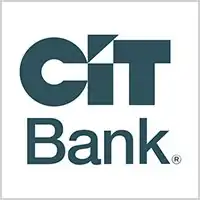When choosing from the best types of investment accounts for beginners and young investors to open, you should consider when and how you plan to use the money (education, retirement, etc.) and whether they are qualifying or non-qualifying investments.
Qualifying investments have tax advantages (such as being tax-deferred or tax-exempt), but they also usually have limitations on eligibility, contribution amounts, and when you can take out money.
Non-qualifying investments are made with after-tax money. Any adult can contribute to non-qualified accounts, without limits, and the money is liquid and easy to add and remove from accounts. Returns, such as gains or interest, face taxes on an annual basis.
Table of Contents
Best Investment Accounts to Consider—Top Picks
|
Primary Rating:
4.8
|
Primary Rating:
4.6
|
Primary Rating:
4.3
|
Primary Rating:
4.7
|
|
Free Stock w/Deposit ($18 - $36,000 value)
|
Earn a Competitive APY
|
No Trading Commissions
|
Free
|
Types of Investment Accounts
These are 11 best types of investment accounts for young investors:
Taxable
- Individual (or Joint) Brokerage Account
- Money Market Fund (Cash Equivalents)
Retirement Plans (Come as Traditional and Roth Options)
- 401(k)
- 403(b) and 457
- Individual Retirement Account (IRA)
- SIMPLE IRA
- SEP IRA
Non-Retirement, Tax-Advantaged Plans
- Health Savings Account (HSA)
- Flexible Spending Account (FSA)
- 529 Savings Account
- Coverdell Education Savings Account
Below are some of the most popular investment accounts and essential information to know if you’re considering opening them.
Taxable Accounts
1. Brokerage Accounts
- Max Contribution: No limit
- Withdrawal Rules: No restrictions unless enforced by broker; must pay taxes on capital gains or taxable distributions
- Mandatory Withdrawals: No rules
An individual brokerage account is one of the most basic and flexible types of investment accounts you can open. With brokerage accounts, you can buy and sell numerous assets, such as stocks, bonds, mutual funds and options, through a licensed broker with very few restrictions.
Eligibility requirements include being a legal adult with a Social Security number or tax ID number. If you’d like to invest as a minor or on behalf of one, you can also open something called a custodial account. These special accounts allow teenage investing and many new financial products pair these apps with other high-value services such as debit cards for teens. These teen investing apps empower them to learn about money from an early age and how to manage their own money.
Most investors over the age of 18 open a cash account that lets you buy investments with money you have deposited. (You have to be at least 18 to invest in stocks by yourself.) It’s also possible to open a margin account where you borrow money from the broker to purchase investments. This type of investing carries higher risks and is not meant for beginner investors.
You can either have an individual taxable brokerage account where you retain sole ownership of the account and responsibility for necessary taxes, or a joint taxable brokerage account. Joint accounts can be shared by two or more people. These are usually spouses, but it can be with anyone, even those who aren’t related to you.
There aren’t any limits to how much money you can contribute to a taxable brokerage account. Your money is liquid and can be withdrawn at any time (although you’ll need to pay taxes on any capital gains or income distributions). The amount you’re taxed on depends on your income level and whether it was a long-term or short-term investment.
As far as which brokerage to invest with, my top recommendation is Webull. They have no deposit minimums and assess zero trading commissions. Further, Webull comes equipped with useful stock research tools and an active investing community for further discussion and analysis.
Webull makes it simple to diversify your portfolio with stocks, options, ETFs and ADRs. You can invest through the free stock trading app or on a desktop. Investors receive free stocks for opening an account and making a qualifying minimum initial deposit.
For convenience, you can also open an individual retirement account through Webull. If you already have a brokerage account elsewhere, they will reimburse your transfer fees up to $100.
- Webull is a low-cost trading and investing app that allows you to invest in stocks, ETFs, options, and crypto, and participate in initial public offerings (IPOs). Webull has also expanded its U.S. offerings to include futures and commodities trading.
- Commission-free trades on stocks, ETFs, and options.
- Trading features include charting tools, technical indicators, customizable screeners, real-time stock alerts, and group orders.
- Let Webull manage your money for you with Webull Smart Advisor, which combines Webull's in-house investment expertise and artificial intelligence to build, manage, and rebalance an ETF portfolio for you.
- New users also get one free month of Nasdaq TotalView's Level 2 Quotes service. (That subscription costs $2.99/mo. thereafter.)
- Sign up for Webull Cash Management to earn a 5.0% APY without fees or minimums.
- Special offer: Open an account and deposit at least $500 to receive 20 free fractional shares, collectively worth between $60-$90,000.*
- Good selection of available investments
- Fractional shares
- Powerful technical analysis tools
- Offers robo-advisory services
- Accessible to beginning and intermediate users
- Voice commands
- Offers highly competitive APY through Webull Cash Management
- Does not support mutual funds
Related: Best Banking Apps for Teens [Teen Banking]
2. Money Market Fund (Cash Equivalents)
- Max Contribution: No limit
- Withdrawal Rules: No restrictions unless enforced by broker; must pay taxes on capital gains or taxable distributions
- Mandatory Withdrawals: No rules
A money market fund (not to be confused with money market accounts) is a mutual fund that invests only in cash and cash equivalent securities. These are liquid, short-term investments with high credit quality, including:
- Certificates of deposit (CDs)
- U.S. Treasuries
- Bankers’ Acceptances
- Commercial paper
- Repurchase agreements
Like other mutual funds, money market funds issue redeemable shares to investors and must follow the SEC’s guidelines. These funds are generally considered safe investments.
Money market funds have relatively low initial investment requirements and shares can be bought and sold at any time.
There are taxable money market funds and ones that are tax-free. With a taxable fund, any returns are typically subject to standard state and federal taxes.
There are far more options for taxable funds than tax-free funds. Tax-free funds invest in short-term debt obligations issued by federally tax-exempt entities. These carry lower yields to account for their tax advantages, making them more attractive to high income earners.
- CIT Bank is an online bank that offers competitive interest rates on its various products.
- CIT's money market accounts current yield roughly 3x the national average.
- CIT Bank's money market accounts feature no monthly service fees, 24/7 banking, mobile app access, and FDIC insurance of up to $250,000.
Related: Best Debit Cards for Kids
Retirement Accounts

While retirement may seem far away and these accounts may not be your top priority, starting early always acts as a smart decision because building wealth reliably requires time. As such, the time spent in retirement investments becomes extremely important
One of the most significant factors that help retirement savings increase in value over long periods of time is compound interest. This acts by having your money generate interest on itself. In other words, your returns earn returns.
The more time this process has to work, the more your savings will grow.
People often believe their cost of living in retirement will be substantially lower than during their working years. However, while some expenses go down, others, such as healthcare costs, go up.
Therefore, you may require far more money in retirement than you realize. To meet this challenge, consider starting at least one type of retirement account covered below as early as possible. It may save you considerable stress and uncertainty when the time to retire finally comes.
3. 401(k)
- Max Contribution (2025): $23,500 + $7,500 (catch-up contribution eligible) for individual (not including employer contribution) f you are aged 60-63, you get a higher catch-up limit of $11,250.
- Withdrawal Rules (2025): Money withdrawn before age 59.5 has a 10% additional tax (exceptions for the Rule of 55 and Rule 72(t))
- Mandatory Withdrawals (2025): Must begin withdrawing by 73 to avoid penalties
You likely already know a bit about how a 401(k) works and may have one of your own. In brief, these act as company-sponsored accounts provided by some employers.
They work by having you designate a percentage of your income (from each paycheck) to contribute throughout the year.
This amount automatically deducts from your pay and then transfers to a brokerage account which invests for you based on your pre-selected investment decisions.
Most employers offer their employees target date retirement funds as Qualified Default Investment Alternatives (QDIA).
This type of investment asset provides a portfolio of underlying holdings which take into account the individual’s targeted retirement date and invests accordingly.
This considers an investor’s risk suitability, meaning the portfolio holds a risk-appropriate investment mix in line with a person’s progress toward retirement.
In general, the sooner a person’s anticipated retirement date, the higher skew towards debt instruments and less equities held in the portfolio.
The reasoning here being that debt acts as an income-generating investment and also preserves capital better than stocks.
The higher volatility seen in stocks can cause timing concerns as the retiree may need to tap into the retirement assets for their cost of living.
When considering whether to invest your retirement dollars in these assets, know the best target date funds have low expense ratios and transition “through” retirement and not “to” retirement.
For a better understanding of these differences, look at the two charts shown below.
Target date funds which transition “through” retirement to shift their holdings as part of a glide path toward a more conservative mix, even after retirement age.
“Through” Target Date Retirement Fund Example
“To” Target Date Retirement Fund Example

For millennials, this higher equity allocation might be necessary to grow our wealth (or even possibly generational wealth) to overcome the lower lifetime earnings we can expect as well as account for our longer average expected life spans.
For contributing money to this taxable account, you can receive a tax deduction on your income now and pay taxes on the contributions later. Alternatively, if your employer offers a Roth 401(k) option, you can pay taxes now and withdraw your money tax free in retirement.
Remember, you have a max contribution you can make each year you have access to make contributions to the plan.
Also, any money you withdraw before age 59.5 from a traditional 401(k) comes with a penalty of 10% unless you withdraw for qualified reasons or are eligible for the Rule of 55 or Rule 72(t). You can also explore taking a 401(k) plan loan should you need temporary, early access to these funds.
Of note on a traditional 401(k) plan, you will need to begin taking required minimum distributions (RMDs) at age 73. Therefore, if you haven’t already started, you need to begin withdrawing to avoid penalties.
The most valuable benefit of a 401(k) is the match programs many employers provide. In this situation, your company agrees to match your contribution up to a certain percentage.
One popular example is companies matching 50% of the first 6% you contribute (making a total of 9%). It’s always recommended to “max out” your 401(k) contributions if you can afford it.
4. 403(b) & 457 Plans
- Max Contribution (2025): $23,500 + $7,500 (catch-up contribution eligible) for individual; If you are aged 60-63, you get a higher catch-up limit of $11,250.
- Withdrawal Rules (2025): Money withdrawn before age 59.5 has a 10% additional tax
- Mandatory Withdrawals (2025): Must begin withdrawing by 73 to avoid penalties
A 403(b) plan is the equivalent of a 401(k) for people who work at non-profit, tax-exempt businesses. Contributions are tax-deferred, meaning you pay taxes at the date of withdrawal and not upfront at contribution, but tax rules and contribution limits apply.
For government employees, 457 plans are their versions of 401(k)s. In addition to the usual benefits, some employers also allow double contributions to 457 plans when an employee is within three years of the plan’s customary retirement age.
Employers are permitted to offer a 401(k) or 403(b) as well as a 457 plan. In this situation, you’re allowed to fund both. Early withdrawals from 457 plans are subject to taxes, but they don’t have any extra penalties.
5a. Traditional Individual Retirement Account (IRA)
- Max Contribution (2025): $7,000 + $1,000 (catch-up contribution eligible) for individual
- Withdrawal Rules (2025): Money withdrawn before age 59.5 has a 10% additional tax
- Mandatory Withdrawals (2025): Must begin withdrawing by 73 to avoid penalties
A traditional individual retirement account (IRA) allows you to contribute direct, pre-tax income towards investments that can grow tax-deferred. These accounts use pre-tax income similarly to how corporate 401(k)s work.
When you withdraw (after age 59.5), you pay taxes on the money.
Contributions are often tax-deductible based on one’s income, tax-filing status, and more factors. When it counts as a tax deduction, the IRS does not apply income tax to those earnings.
These accounts can be opened through a broker (including an online one like Webull or a robo-advisor like M1 Finance) or with a financial advisor.
Available IRA Investment Options
With IRA accounts, you place your investable funds into investment vehicles based on the available investment options and your investing goals. Several IRAs offer equities, bonds, real estate, alternative investment options, and many other asset classes.
For IRAs, if you withdraw your funds for non-qualified reasons before the age of 59.5, you will face an early withdrawal penalty. Further, you will also need to begin taking RMDs at the age of 72 if you haven’t initiated withdrawals yet.
You can also invest in non-stock investments in an IRA through a self-directed IRA company like Alto IRA. The company began with a simple question, “Can I make an alternative asset investment using my IRA money?” Through special retirement accounts (SDIRA), it turns out, you can.
Companies like Fundrise also offer crowdfunded real estate assets you can invest in through an IRA.
5b. Roth IRA
- Max Contribution (2025): $7,000 + $1,000 (catch-up contribution eligible) for individual
- Withdrawal Rules (2025): Money withdrawn before age 59.5 has a 10% additional tax on capital gains (not contributions held in account for at least 5 years)
- Mandatory Withdrawals (2025): None (taxes paid at time of contribution)
Unlike some traditional retirement accounts, such as 401(k)s, you contribute post-tax income into Roth IRAs. Despite the difference in tax timing, you still must stay within yearly contribution limits.
When you retire and start withdrawing money, any capital gains you realize come to you tax-free. This reverses the tax effect seen with traditional IRAs where you contribute money tax-free and pay taxes when you withdraw.
Stated simply, for Roth IRAs, once you reach age 59.5, you have no tax consequences when you withdraw funds from your account. This includes capital gains, passive income from dividends or other distributions.
Unique to Roth IRAs, they come with a five-year holding requirement, even if you are over age 59.5. This means you need to keep contributions made to the account for at least five years before you can withdraw.
In the instance you are 59.5 or older and have not met the five-year holding period, you will not face early withdrawal penalties. However, you will have these funds subject to normal taxes on your gains.
Fortunately, if you need to take a distribution before the minimum age and before you’ve had the account for five years, you can withdraw funds and avoid penalties (but still not taxes).
A few ways to avoid penalties include:
- Using the withdrawal (up to a $10,000 lifetime maximum) towards a first-time home purchase
- Using the money for expenses related to birth or adoption
- Using the money for qualified higher education expenses
- Using the money for unreimbursed medical expenses or health insurance (if you’re unemployed)
- You become disabled
When possible, it’s advised to try and wait to withdraw funds until retirement.
6. SIMPLE IRA
- Max Contribution (2025): $16,500 + $3,500 (catch-up contribution eligible) per individual. If you are aged 60-63, you get a higher catch-up limit of $5,250.
- Withdrawal Rules (2025): Money withdrawn before age 59.5 has a 10% additional tax
- Mandatory Withdrawals (2025): Must begin withdrawing by 73 to avoid penalties
A SIMPLE (Savings Incentive Match Plan) IRA is employer-generated and allows employees to contribute to a traditional IRA set up by the employer.
The employer must contribute to the plan by either making:
- a matching contribution of up to 3% of their employee’s salary, or
- a default of 2% of an employee’s salary (whether the employee contributes or not).
Employees have funds completely vest in the SIMPLE IRA at contribution. This means they have possession of the money (including employer contributions) from the time the employer and employee contribute to the plan.
SIMPLE IRAs can be appealing to smaller employers because they have no operating or administrative costs (like those associated with 401(k) plans).
Employees are eligible for these plans if they earned a minimum of $5,000 in compensation in the last two years and if they expect to receive at least that much in the current year.
Though, like most other retirement accounts, contribution limits apply. Withdrawals come penalty-free starting at age 59.5 and RMDs begin at age 73.
7. SEP IRA
- Max Contribution (2025): Cannot exceed the lesser of 25% of an employee’s total compensation or $70,000
- Withdrawal Rules (2025): Money withdrawn before age 59.5 has a 10% additional tax
- Mandatory Withdrawals (2025): Must begin withdrawing by 73 to avoid penalties
A SEP (Simplified Employee Pension) IRA lets employers contribute to a traditional IRA on behalf of their employees. They can contribute the lesser of 25% of each employee’s salary, or $70,000.
If the employer wishes to offer these accounts, the employer must set up SEP IRAs for all eligible employees. To be eligible, an employee must:
- be at least 21 years old,
- have been employed at the company for a minimum of three of the last five years, and
- been paid at least $600 during the current year.
These accounts can be used by businesses of any size, as well as by self-employed individuals. There are no starting or operating costs.
A SEP IRA differs from 401(k)s and SIMPLE IRAs in that employees cannot contribute. While employees fully vest in the account starting at the date of account creation, they still encounter similar age rules as other retirement accounts.
Namely, to avoid penalties, employees shouldn’t withdraw until age 59.5 and must begin taking RMDs from the account at age 73.
Where Can I Open a Retirement Account?
As previously mentioned, some types of retirement accounts must be started by an employer. You can also use a brokerage account (more on this in the next section) to save for retirement or discuss options with your current bank.
Some new investors, who have trouble accumulating money to put towards retirement, can choose to start with micro-investing apps, such as Acorns Later.
Acorns Later is an easy way to start saving for retirement and is an especially popular financial app for young adults. You can begin investing with as little as $5 in just a few clicks and it only costs $3 per month.
Further, this account is perfect for young adults in school because the service does not charge an account fee for users who have an active .edu email address.
There are no minimum balance fees or overdraft charges. Similar to the standard Acorns app, you can invest your spare change to make contributions painless.
For those with more investing knowledge and comfort navigating investment choices, consider an app like M1 Finance. This app builds “Portfolio Pies” which hold selections of stocks you find appealing for long-term capital appreciation.
You can choose your own stocks and ETFs to hold in these pies or you can choose from over 80 expert-created portfolios to guide your decision-making. M1 Finance is a top investment choice because it charges no commissions, account fees, nor assets under management (AUM) fees.
- M1's Smart Money Management gives you choice and control of how you want to invest automatically, borrow, and spend your money—with available high-yield checking and low borrowing rates.
- Includes an FDIC-insured checking account and an M1 Visa debit card that delivers 1% cash back.
- Unlock perks including higher cash-back rewards on the M1 Owner's Rewards Credit Card, 4.25% APY from high-yield savings, ATM reimbursements, and 0% international fees.
- Invest in stocks, ETFs, and cryptocurrencies.
- Robo-advisor with self-directed investing capability
- Attractive cash-back and APY opportunities
- Doesn't support mutual funds
- Doesn't allow trading throughout the trading day
- Monthly fees for account balances <$10,000
Other Tax-Advantaged Investment Accounts

8. Health Savings Account (HSA)
- Max Contribution (2025): $4,300 + $1,000 (catch-up contribution eligible) for self-only; $8,550 + $1,000 for families
- Withdrawal Rules (2025): Money withdrawn for non-qualifying medical expenses incur 20% additional tax
- Mandatory Withdrawals (2025): None
For Americans, healthcare can be a significant expense and health emergencies can happen to anyone. A health savings account (HSA) is a savings account specifically used for health-related expenses.
With an employer-sponsored account, contributions come from your paycheck before taxes. Some employers offer the ability to contribute to your HSA via a payroll deduction as well.
Individuals can also set up their own HSA with a service like Lively and deduct their contributions to pay less in taxes that year. Unused money in these accounts rolls over to the following years indefinitely.
Lively, as well as some accounts, let you invest your savings in mutual funds or other investments. For qualified medical expenses, you can withdraw money at any time tax-free.
If you withdraw funds for anything but medical expenses, and you’re under age 65, you must pay a 20% penalty.
- Maintenance/other recurring fees: None
- Investment fees: Schwab Health Savings Brokerage Account: $24/yr*. HSA Guided Portfolio: 0.50%/yr.
- Minimum balance to invest: $0
- Investment options: Stocks, bonds, mutual funds, ETFs (investments depend on account type)
- Maximum investment flexibility via self-directed Schwab HBSA
- No minimum balance to invest
- Low fees for mutual funds available in HSA Guided Portfolio
- Powerful, intuitive mobile app
- Bill pay
- FDIC-insured cash accounts
- SIPC-insured investment accounts
- High Trust Pilot Rating (Especially relative to competitors)
- HSBA fees are high (on a percentage basis) for low- to mid-balance accounts.
- HSA Guided Portfolio fees are high (on a percentage basis) for mid- to high-balance accounts.
Past age 65, you can use the money for anything without incurring a financial penalty. Unlike any of the retirement accounts covered above, you never have to take distributions from your HSA.
Not everyone has the eligibility to an HSA, however. You can only open an HSA if:
- you are currently enrolled in a High Deductible Health Insurance Plan (HDHP),
- don’t receive Medicare coverage,
- aren’t able to be covered under any disqualifying health coverage, and
- aren’t claimed as a dependent on anyone’s tax return.
9. Flexible Spending Account (FSA)
- Max Contribution (2025): $3,300 for individual; $6,600 total for a married couple
- Withdrawal Rules (2025): Money withdrawn for non-qualifying medical services faces no IRS penalty, but may from employer
- Mandatory Withdrawals (2025): None, operates as “use it or lose it,” and the maximum carryover amount is $660.
Flexible spending accounts (FSAs) are only offered through employers- you can’t open one on your own. These are sometimes referred to as flex spending arrangements.
FSAs allow you to contribute a portion of your income toward paying for qualifying expenses, such as health care or dependent care. This money comes from your paycheck pre-tax, so you save the percentage you would have paid on that money in federal taxes.
Money in a FSA must be used by the end of the year, but some employers grant a grace period into the following year for unused balances.
Educational Accounts

Receiving a high-quality education can make an enormous difference in a person’s life, but it can also cost a significant amount of money. What to do with that debt after graduation often befuddles young adults intent on making the decision to invest or pay off student loans.
Given that high cost for attending a quality school, it will come as little surprise that college tuition continues to rise across the country. Many parents will continue to spend substantial amounts to send their children to college.
As a result of this continuing trend, any adult who has children may want to get ahead of the curve by beginning to save now. Fortunately, the federal government offers some education-focused investment account types to set aside money now for expenses parents will pay later.
10. 529 Savings Account
- Max Contribution (2025): $19,000 per individual per year ($38,000 per couple per year)
- Withdrawal Rules (2025): Money withdrawn for non-qualifying educational expenses face income tax and 10% penalty
- Mandatory Withdrawals (2025): None
A 529 savings plan is used to pay for education expenses with tax-advantaged dollars. My wife and I each have one set up for each of our sons, allowing both ourselves and each other’s parents to contribute to these educational savings accounts.
Most states have their own 529 plans you can open directly, but this does not usually affect the schools in which you can spend the money around the nation.
For example, my wife and I have accounts domiciled and invested in California’s plans, but our sons could choose to attend college in another state and still have access to those funds to cover qualified educational expenses.
We opened 529 accounts through my employer but if we did not have this option available, we would have looked to a service like Backer.
The service makes setting up a 529 savings plan quick and easy by offering mutual funds and other market-driven investment vehicles to grow your child’s account balance over time.
Further, you can receive one-time or recurring contributions from friends and family to go toward the 529 plan balance. Simply share your account code and the person can make a contribution.
- Backer allows you to invest your educational savings tax-free in a 529 plan and also allows for family and friends to help you to save more.
- Use low-cost index funds to invest in different asset classes, including stocks and bonds.
To incentivize individuals to save, select states also offer matching programs for contributions made to 529 plans. Employers are beginning to hop on that program idea as well as many see this as an attractive benefit to offer employees.
The main benefit is that you aren’t taxed on this money on the way out and earnings grow on a tax-advantaged basis. However, you’re limited to only use this money on qualifying educational expenses or else face a 10% additional tax penalty on earnings.
Finally, it’s important not to confuse a 529 Savings Account with 529 prepaid tuition plans that allow you to lock in a tuition rate.
Related: Best Investment Accounts for Kids
11. Coverdell Education Savings Account
- Max Contribution (2025): $2,000 per year across all Coverdell accounts
- Withdrawal Rules (2025): Money withdrawn for non-qualifying educational expenses faces 10% penalty
- Mandatory Withdrawals (2025): Money must be used before student reaches age of 30 (exceptions for special needs)
A Coverdell education savings account (Coverdell ESA) is a custodial account or trust created to pay for the designated beneficiary’s educational expenses. Coverdell ESAs are lesser-known than 529 savings plans, but work similarly.
They also offer tax-free earnings growth and tax-free withdrawals, as long as the funds are spent on qualifying educational expenses.
However, the benefit doesn’t apply only to higher education expenses. Qualified elementary and secondary expenses count as well.
The account must be established prior to the beneficiary becoming an adult, unless the recipient has special needs. Contributions must be made in cash and aren’t deductible. Total contributions to the beneficiary can’t exceed $2,000 in any given year.
Like 529 plans, distributions are tax-free as long as they’re used on qualifying expenses. If a distribution is more money than needed for education, the excess portion is taxed.
All money in the account must be distributed by the time the beneficiary reaches age 30, unless that person has special needs. In some situations, transfers to members of the beneficiary’s family are allowed.
Related: Best Investments for Children
Managing Your Investment Accounts for Young Investors
Many people have several types of investment accounts, as well as checking or savings accounts, credit cards, and more.
Tracking all of your wealth can become complicated and it can be challenging to see the big picture of your cash flow and investments. If you want help managing your finances, I recommend signing up for Empower (Personal Capital is now Empower).
Empower provides you a “360-degree view of your money” when you link all of your external financial accounts and investments in one place. It helps you to uncover insights into your net worth, provides budgeting advice, and helps you calculate your progress toward retirement.
Empower realizes every investor is unique, so they have registered financial advisors to aid you in building a personal portfolio.
- Empower (formerly Personal Capital) offers both a free set of portfolio, net worth, and cash flow tracking tools, as well as paid asset management service.
- Link Empower to your bank and investing accounts, credit cards, and more to see a single view of useful information and data, including your net worth.
- Empower Wealth Management offers unlimited advice and retirement planning help, as well as managed ETF portfolios, for accounts with between $100,000 and $250,000 in assets. Higher asset tiers include access to dedicated financial advisors, retirement specialists, and more investment options (including stocks, options, real estate, and private equity).
- Free portfolio tracker
- Free net worth, cash flow, and investment reporting tools
- Dedicated investment advisor
- Free tax-loss harvesting
- Dividend reinvestment
- Automatic rebalancing
- 5-day-a-week live customer support, 24/7 email support
- High minimum for investment management ($100k)
- High investment management fee (0.89% AUM)
Best Investment Account Types to Consider
While it may seem easier to just put all of your extra money in a savings account, by doing that, you would have to save far more money to reach the same goal.
Savings accounts are great for emergency funds and other uses, but for long-term savings, you typically earn much higher returns with investments. When you have a long time to meet your goal, your returns will compound.
The type of investment account(s) you choose is up to you. Keep in mind that, depending on what kind of work you do, your options will vary.
The best investments for young investors should also be based on your income level and your level of risk tolerance. Regardless of which investment accounts you choose to open, it’s best to start early. Start investing in your future today.














![10 Best Investments for Roth IRA Accounts [Tax-Smart Growth] 44 best investments for roth ira](https://youngandtheinvested.com/wp-content/uploads/best-investments-for-roth-ira.webp)
